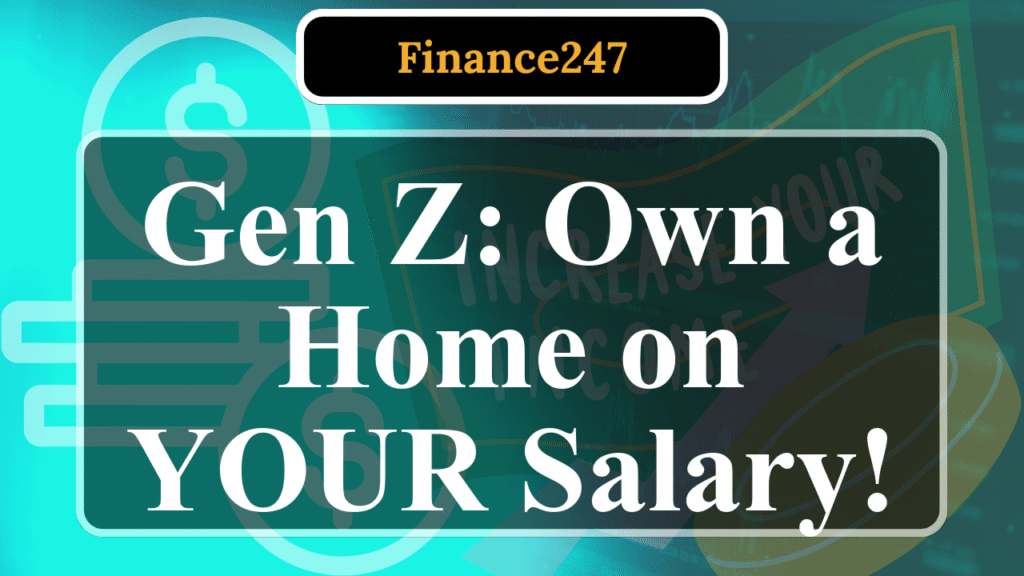“With soaring home prices and economic challenges, Gen Z faces a tough path to homeownership. This article outlines seven practical strategies to make it achievable, from leveraging low-down-payment loans to co-buying and relocating to affordable areas. Learn how to navigate high costs, save smarter, and turn the dream of owning a home into reality on a Gen Z salary.”
Practical Strategies for Gen Z Homeownership
1. Leverage Low-Down-Payment Loan Programs
Gen Z buyers often struggle with saving for a down payment. Federal Housing Administration (FHA) loans require as little as 3.5% down for those with credit scores of 580 or higher, compared to 10–20% for conventional loans. Veterans can explore VA loans, which often require no down payment. First-time homebuyer programs, like those offered by state housing agencies, can also provide grants or down payment assistance. For example, 8% of Gen Z buyers used government grants, while 11% purchased foreclosed properties to reduce upfront costs. Research local programs through HUD’s website or consult a mortgage professional to identify eligibility.
2. Move to Affordable Housing Markets
High home prices in coastal cities like San Francisco or New York make homeownership tough. Gen Z buyers are relocating to more affordable regions, such as Pittsburgh, St. Louis, or Indianapolis, where median home prices are below $165,000. Zillow data shows the national average home price is $359,892, but in states like West Virginia, it’s as low as $167,571. Remote work enables broader geographic searches, allowing buyers to stretch their dollars further.
3. Co-Buy with Friends or Family
Co-ownership is gaining traction among Gen Z. About 70% of Gen Zers are open to co-buying with friends to split costs. This approach pools resources for down payments and monthly payments, making homeownership more attainable. For example, splitting a $300,000 mortgage among three buyers reduces individual costs significantly. Legal agreements, like tenancy-in-common contracts, are essential to outline ownership shares and responsibilities.
4. Live with Parents to Save for a Down Payment
With 49% of young adults living with parents in 2021 due to affordability issues, this strategy is common. By avoiding high rent—often 30% of income for median earners—Gen Z can save thousands annually. For instance, saving $1,000 monthly by living rent-free could yield $36,000 in three years, enough for a 10% down payment on a $360,000 home. This approach also helps build credit by reducing financial strain.
5. Work Multiple Jobs or Side Hustles
Roughly one-third of Gen Z homeowners worked multiple jobs to afford a home. The gig economy offers opportunities like freelance work, ride-sharing, or online tutoring, which can supplement incomes averaging $38,792 for 16- to 24-year-olds. For example, earning an extra $500 monthly from a side hustle could cover closing costs or boost savings for a down payment over time.
6. Buy a Fixer-Upper or Foreclosed Home
Purchasing a fixer-upper or foreclosed property can lower costs. About 15% of Gen Z buyers opted for fixer-uppers, while 7% bought foreclosed homes, a higher rate than other generations. These properties often sell below market value—sometimes 20–30% less—allowing buyers to invest in renovations over time. Ensure a thorough home inspection to avoid unexpected repair costs.
7. Build Credit and Reduce Debt
A strong credit score is critical for securing favorable mortgage rates. Conventional loans require a 620 score, while FHA loans accept 580. Gen Z should avoid high-interest credit card debt and pay down student loans, which average $37,000 for recent graduates. Timely bill payments and keeping credit utilization below 30% can boost scores. Free tools like Experian’s credit monitoring can help track progress.
Disclaimer: This article provides general financial tips based on current market trends and publicly available data. Always consult a licensed financial advisor or real estate professional before making homebuying decisions. Sources include industry reports, government data, and expert insights.


